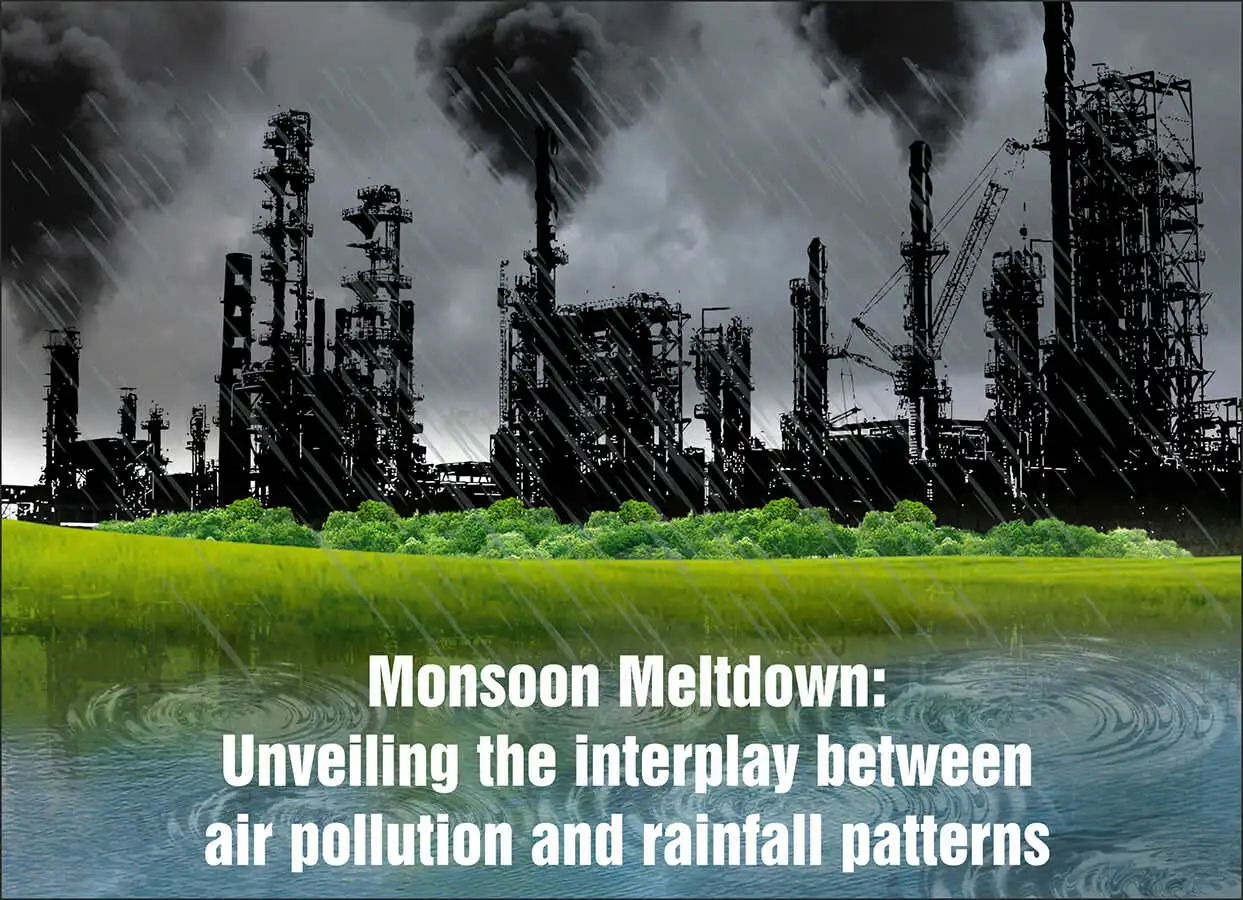Monsoon and Air Pollution
23 Aug 2023
The monsoon and air pollution are closely linked, and their interaction has significant implications for both public health and the environment. Here is an overview of how the Indian monsoon and air pollution are interconnected:
1. Monsoons: The monsoon is a vital climate phenomenon that brings most of the annual rainfall to the Indian subcontinent. It typically occurs in two phases: the southwest monsoon (June to September) and the northeast monsoon (October to December). The southwest monsoon is particularly important as it provides most of the rainfall that supports agriculture and water resources across the region.
2. Air Pollution in India: Air pollution is a severe environmental and public health issue in India, especially in densely populated urban areas. Factors contributing to air pollution include vehicular emissions, industrial activity, construction, biomass burning (including crop residue burning), and other anthropogenic sources. The pollutants generated from these sources include particulate matter (PM2.5 and PM10), nitrogen dioxide (NO2), sulphur dioxide (SO2), ozone (O3), and volatile organic compounds (VOCs).
Interaction Between Monsoon and Air Pollution:
Monsoon's Impact on Air Pollution: The onset of the monsoon can lead to a temporary improvement in air quality. The monsoon rains help to wash out pollutants from the atmosphere, leading to a reduction in particulate matter levels and other pollutants. This cleansing effect can provide some relief from the high levels of air pollution experienced during the dry seasons.
Air Pollution's Impact on Monsoon: Studies suggest that air pollution, particularly aerosols (tiny suspended particles), can influence monsoon patterns in India. Aerosols can affect cloud formation and properties, potentially leading to changes in rainfall patterns and the intensity of the monsoon. The presence of certain aerosols might suppress rainfall by inhibiting the growth of cloud droplets.
Feedback Loops and Climate Change: Air pollution can influence not only the immediate monsoon patterns but also long-term climate dynamics. The complex interactions between aerosols, clouds, and radiation can lead to intricate feedback loops that affect regional and global climate patterns. Additionally, the warming effects of greenhouse gases, which contribute to climate change, can further influence monsoon behaviour.
Efforts to reduce air pollution in India are crucial not only for improving public health and air quality but also for maintaining a stable and predictable monsoon pattern. A cleaner atmosphere can contribute to more consistent and reliable monsoon rainfall, which is vital for agricultural productivity and water availability.
The interactions between the monsoon and air pollution are complex and multifaceted, and ongoing research is essential to gain a deeper understanding of these mechanisms and their potential consequences. Scientists continue to study these interactions using advanced modelling techniques, satellite observations, ground-based measurements, and other tools to unravel the intricacies of how air pollution and monsoon patterns influence each other.
Some key areas of ongoing research include:
Aerosol-Cloud Interactions: Understanding how aerosols emitted from pollution sources interact with clouds and affect their properties is a significant focus. Researchers are investigating how aerosols impact cloud formation, precipitation processes, and overall monsoon dynamics.
Regional Climate Modelling: Sophisticated climate models are being used to simulate and project the potential impacts of changing air pollution levels on monsoon patterns in the future. These models help assess how different pollution scenarios could alter rainfall distribution and intensity.
Health and Environmental Impacts: Ongoing studies aim to quantify the health and environmental impacts of air pollution during the monsoon season. This includes assessing the role of air pollutants in exacerbating respiratory illnesses and affecting ecosystems, especially when combined with monsoon-related factors.
Introducing the PetriMed CA Air Purification System – the solution to counter the emergence of perplexing and confounding air pollution challenges.
Representing an advanced air treatment solution, not limited to mere purification.
Incorporating ultra-fine filtration and Medical Grade Plus HEPA filter H14 ISO 50 U), guaranteeing filtration efficiency of up to 99.999% (highest), ensuring air free from contaminants.
Utilizing UVC disinfection: Effectively eliminating even the most resilient microorganisms, including SARS-CoV-2 and its variants such as Omicron and Delta.
Featuring Air Ionization and air enrichment alongside purification, providing additional health benefits.
Experience the PetriMed CA Air Purification System – your answer to tackling the complex realm of modern air pollution challenges.
